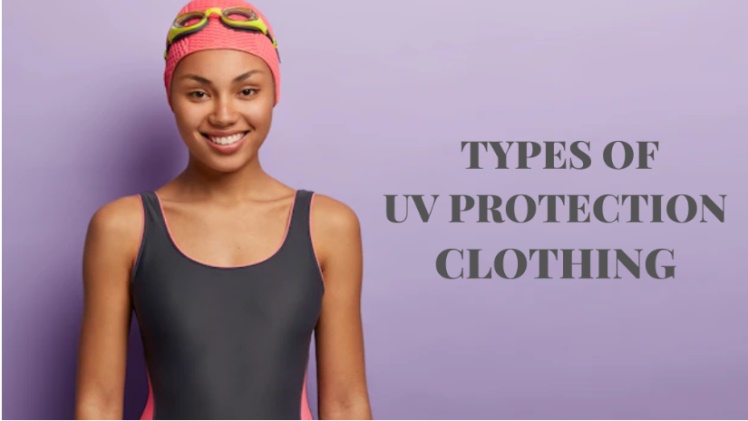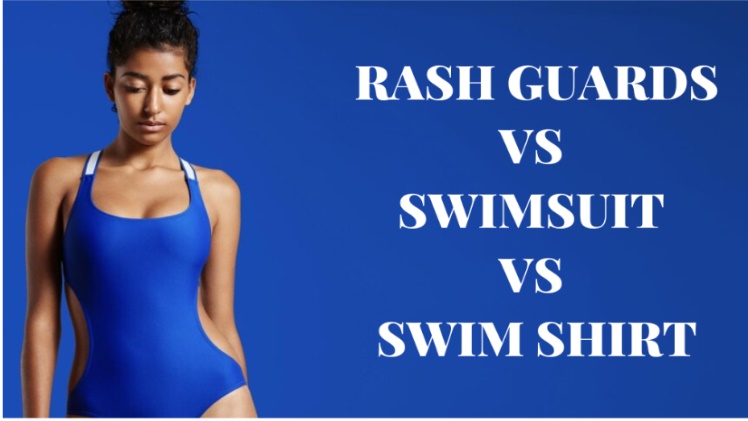For athletes and lovers of outdoor activities, it’s essential to wear the correct type of protective clothing. Whether you’re skiing, snowboarding, or participating in any other outdoor sport, the right protective clothing can help keep you safe and comfortable.
So in this article, we will discuss the differences between rash guards, swimsuits, and swim shirts and their purposes as well as their uses.
Choosing The Right Clothing
When it comes to skin protection, the right clothing can provide a barrier between your skin and the elements. Wear a base layer made of wicking fabric to help keep you dry and warm, and add a mid-layer such as a fleece or softshell jacket to provide insulation and wind protection.
But you will need another set of clothing if it’s sunny or you are to engage in an outdoor activity with the glaring sun such as swimming or hiking. Factors that cause skin damage should be in mind before engaging in such activities. But there are a few ways you can protect your skin from the elements.
The cause behind skin damage these days is the harmful UV rays from the sun. That’s why it’s essential to protect yourself by using protective clothing.
So wearing a wide-brimmed hat, sunglasses, and sunscreen with an SPF of at least 30 is necessary. Additionally, wearing long sleeves and swim pants on your trip to the beach can help block-out harmful UV rays. It’s also essential to also stay hydrated, which helps your skin stay healthy and resilient.
Types of UV Protection Clothing

A swim out is one of the most common outdoor activities. Most people enjoy having a dip in the cool sea, where families can play in the sand. Unfortunately, swimming out can get you exposed to the sun.
If you’re confused as to whether to wear rash guards, a swimsuit, or a swim shirt on your next beach trip, we’ve got you covered. In this article, we will give you the most common swimwear, its purposes, as well as its uses.
1. Rash Guard
A rash guard is a piece of clothing made from a stretchy material worn while participating in water sports or activities such as surfing, swimming, or bodyboarding.
The fabric used for a rash guard is made of a nylon and spandex blend that is lightweight and breathable. The material also provides a snug fit and offers the durability needed to withstand harsh elements.
Usually paired with UV protected swim pants, this combination is perfect for the overall protection of your skin. And for overall comfort and safety, swim pants ensure your legs down to your ankles are protected not just from harmful UV rays but also from skin rashes.
Purpose:
- They protect from the sun’s harmful rays. The fabric used for rash guards is typically rated with a UPF rating of 30 or higher, meaning it blocks 97.5% of the sun’s UV rays.
- The tight-fitting fabric of rash guards helps protect the skin from abrasions, rashes, and other irritations caused by exposure to the elements.
- Rash guards are designed to be comfortable, with a snug fit that helps to reduce drag in the water and keeps the garment in place.
- They help to keep the body warm in cold water, as the fabric traps a thin layer of water against the body and helps to retain heat.
- They are available in various colors, styles, and designs to let you be in your style.
Uses:
- Rash guards are commonly used by swimmers to protect their skin from the sun and to stay comfortable.
- These are essential for surfers, as they provide protection from the sun and help to reduce irritation from the surfboard.
- They are often worn by bodyboarders to help keep the body warm and to protect the skin from irritation caused by the board.
- They are a must for divers, as they provide protection from the sun and help to keep the body warm in cold water.
- They are a great way for water skiers to stay comfortable and protect their skin from the sun and other elements.
2. Swimsuits
UV protection swimsuits are swimwear specifically designed to protect from the sun’s harmful UV rays. They are made from a lightweight, breathable fabric that blocks out UVA and UVB rays, and may also feature a UPF rating for additional sun protection.
Purpose:
- They block out UVA and UVB rays, protecting the skin from sunburn and skin damage.
- Sun exposure can cause premature skin aging, and UV protection swimsuits can help to reduce this effect.
- They are made of lightweight, breathable fabric that allows the wearer to stay comfortable regardless of the activity.
- Many UV protection swimsuits come with features that help to improve performance by providing a better fit and more support.
- Wearing a UV protection swimsuit can give the wearer a sense of confidence, knowing that their skin is protected from the sun’s harmful web series review rays.
Uses:
- They are perfect for swimming in pools, lakes, and the ocean.
- They are great for activities like water skiing, wakeboarding, and tubing.
- They provide additional protection from the sun’s rays while snorkeling and scuba diving.
- They are perfect for days spent relaxing at the beach.
- They protect themselves from the sun’s rays during outdoor activities like running, biking, and hiking.
3. Swim Shirt
A swim shirt is a piece of clothing designed to protect the wearer from the sun’s UV rays while swimming. Its design resembles that of an ordinary t-shirt but it’s made up of spandex, nylon, and polyester. Basically, it’s like a rash guard but with shorter sleeves.
Purpose:
- Protect the wearer from the sun’s damaging ultraviolet (UV) rays
- Protect from the wind while swimming
- Keep the wearer warm in cooler water temperatures
- Reduce the risk of skin damage and sunburn
- Decrease the risk of skin cancer
Uses:
- Swimming in the ocean, lake, or pool
- Water sports such as kayaking, surfing, etc
- Boating and fishing
- Sunbathing
- Hiking, camping, and other outdoor activities
What Are Their Differences?
Rash Guards V/S Swimsuits
The key differences between both are:
- Rash guards provide more protection from the sun and other elements than swimsuits. This piece of clothing is designed with UPF (Ultraviolet Protection Factor) built into the fabric, which blocks both UVA and UVB rays. Meanwhile, swimsuits do not provide this level of protection.
- Rash guards are usually more form-fitting than swimsuits, making them less prone to riding up or shifting when you move. Swimsuits may bunch up or sag in the water and can become uncomfortable after a while.
- Also, rash guards are typically made of a thicker material than swimsuits, which makes them more durable and helps them last longer. Swimsuits can become stretched out and lose their shape over time.
- Rash guards are often more flattering than swimsuits. They are designed to hug the body and accentuate a person’s shape, while swimsuits can be more revealing and can draw attention to areas you may not be comfortable with.
- Furthermore, rash guards provide more coverage than swimsuits, making them a good choice for people who are modest and want to cover up more of their bodies. On the other hand, swimsuits usually reveal more skin and can leave the wearer feeling exposed.
Swimsuits V/S Swim Shirt
The difference between swimsuits and swim shirts are:
- Swimsuits are typically full-body garments that are made from materials such as nylon or lycra. Swim shirts, on the other hand, are t-shirt-like garments made from a lightweight material, such as cotton or polyester.
- Swimsuits typically cover more of the body than swim shirts. Swimsuits fit snugly against the body and provide more coverage from the sun. Whereas swim shirts fit loosely around the body and provide less coverage.
- Swimsuits are generally more expensive but are more comfortable than swim shirts. Swimsuits are made from a stretchy material and require more fabric and construction time. On the other hand, swim shirts are typically made from a lightweight material and require less fabric and construction time.
Final Words
Knowing the differences between rash guards, swimsuits, and swim shirts, and their purposes and uses can help you make the best choice for your needs. When choosing sun protection clothing, be sure to look for a UPF rating, as this will indicate how much of the sun’s UV rays are blocked.
And always remember to wear layers and dress appropriately for the weather. This will help keep you safe and comfortable while enjoying your favorite outdoor activities.
FAQs
- Why is it essential to wear UV-protective clothing?
- It is essential to wear UV-protective clothing to protect your skin from the sun’s harmful UV rays, which can lead to skin cancer and premature aging. Wearing the right type of protective clothing can help to block out UVA and UVB rays and reduce the risk of skin damage.
- What are the things to consider while buying UV-protective clothing?
- When buying UV-protective clothing, there are several things to consider, such as the fabric, UPF rating, fit, and style. It is essential to look for a UPF rating, as this will indicate how much of the sun’s UV rays are blocked.
- What are the best swim pants for women?
- There are many different types of swim pants for women, such as board shorts, capris, and knee-length pants. When choosing swim pants, it is essential to consider the fabric and UPF rating, as well as the fit and style. Board shorts are typically the most popular choice for women, as they are lightweight and provide coverage from the sun’s UV rays.
- What is UPF women’s swimwear?
- UPF stands for Ultraviolet Protection Factor, and it is a rating system used to measure the amount of protection a fabric provides from the sun’s UV rays. Clothing with a UPF rating of 30 or higher is considered to be the most protective, as it blocks 97.5% of the sun’s UV rays.

